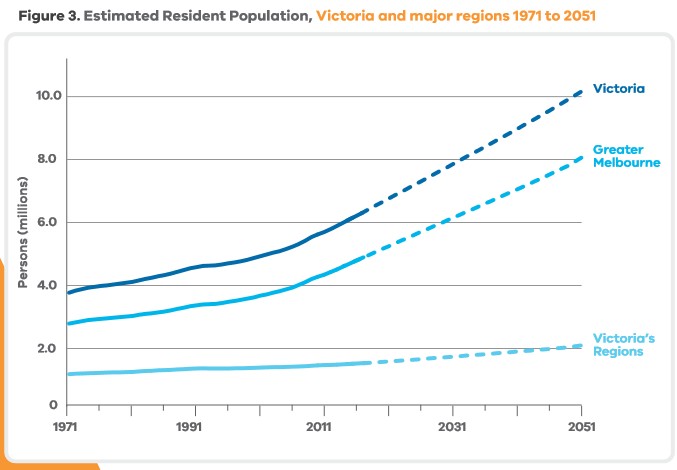Infrastructure Victoria has released its draft 30-year Infrastructure Strategy, which has made 134 recommendations worth around $100 billion aimed at combating congestion, urban sprawl, and boosting housing affordability.
The plan includes all of the usual stuff, including:
- Some new infrastructure projects, such as a $10 billion “Missing Link” road in the north-east and a $5 billion rail line to Melbourne Airport as priority projects for completion within the next 15 years.
- The introduction of a congestion tax to reduce road demand and forestall the need for more infrastructure investment. The report claims that around 20% of car trips between 7am and 9am are not related to work or education.
- Denser development in areas where infrastructure is already well established, including Melbourne’s eastern and southern suburbs, to stop Melbourne sprawling.
Of the 134 recommendations, around 35% are new projects and 45% are behaviour change/supply management initiatives. The remaining recommendations are about better planning and prioritisation and further investigation.
This site has long supported congestion charging, since it discourages drivers who make relatively low value trips. Those who aren’t prepared to pay will make the trip at another time, shift to public transport, or decide it’s not worth making at all.
That said, I doubt this infrastructure plan will do much to stop the slide in Melbournians’ living standards. We have seen similar plans released over the past decade or so, and not much ever seems to change. The city’s population continues to balloon and infrastructure never catches up.
Indeed, the Victorian Government’s own population projections forecast that Melbourne’s population will add roughly 100,000 people annually over the next 30 years, swelling the city’s population by a whopping 75% to 8 million people, mostly via immigration:
It is difficult to see how the relatively modest infrastructure proposed, along with congestion pricing, could possibly mitigate such growth and prevent congestion and overall livability from falling.
The same goes for housing affordability. I am yet to see a city achieve affordable housing by simultaneously restricting sprawl, increasing densification, and growing its population strongly. And it would be foolhardly to think that Melbourne could some how achieve such an outcome this time around. In fact, we have seen this experiment play out in Melbourne over the past 12 years with poor results.
The only thing I can say in favour of this plan is that it is better than nothing. Because if we don’t build it, the people will probably still come.


